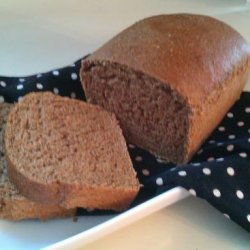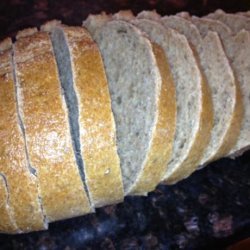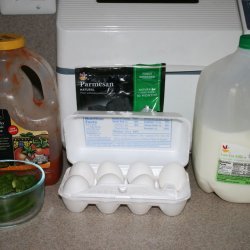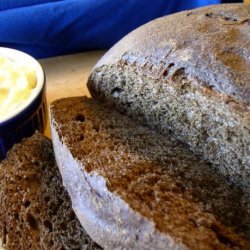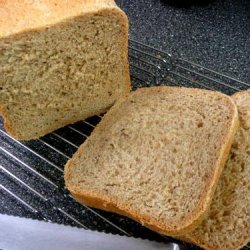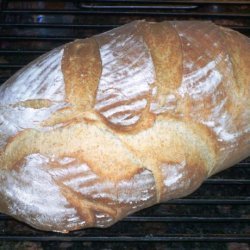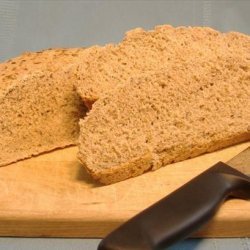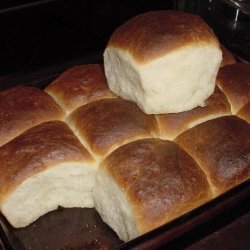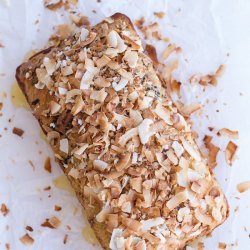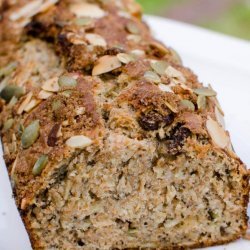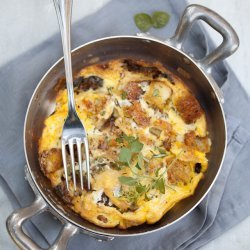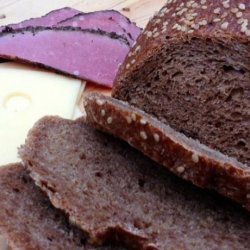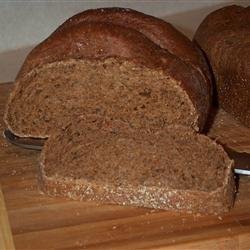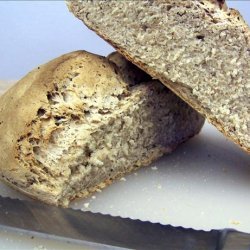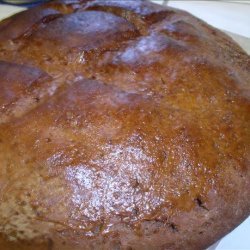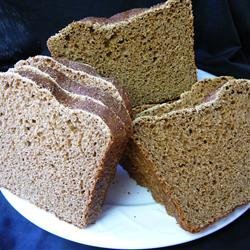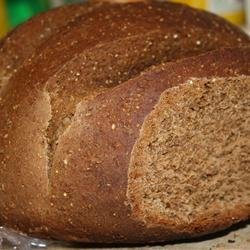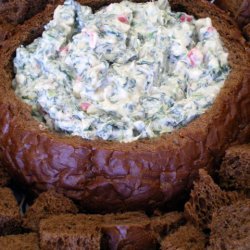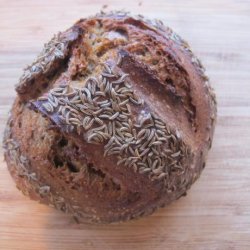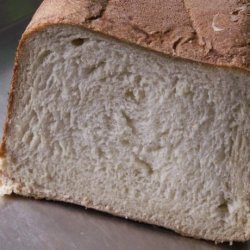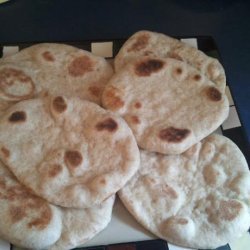Directions:
- The day before making the bread:.
- Mix proofed starter, rye flour, and water in a bowl.
- This will make a wet, pasty barm (starter).
- Cover the bowl with plastic wrap and ferment at room temperature for 4 to 5 hours or until the the sponge becomes bubbly and foamy.
- Immediately put it in the refrigerator overnight.
- Bread baking day:.
- Remove the rye barm (starter) from the refrigerator one hour prior to making the dough.
- After chill is off the barm, stir together the flour, sugar, cocoa, salt and yeast in large mixing bowl.
- Add the rye barm, bread crumbs and oil and mix on low speed with paddle attachment until the ingredients form a ball.
- Add additional water if the dough ball does not pick up all the flour, or more flour if the dough seems too wet.
- With dough hook attachment mix on loaw speed for 4 to 5 minutes.
- Add more flour as needed to make a smooth pliable dough ball. It should be tacky but not sticky.
- Note: Rye bread will become gummy if you mix too long, so try to make all adjustments early and minimize the mixing and kneading process.
- Transfer dough to lightly oiled bowl, rolling it around to coat it with oil.
- Cover bowl with plastic wrap and ferment at room temperature for 2 hours or until doubled in size.
- Sprinkle small amount of flour on the counter and carefully transfer the dough to the counter (try not to degas the dough).
- Divide the dough in 2 equal pieces and shape them into boules or rectangle for sandwich bread.
- Line baking sheet with parchment (or use proofing basket) and sprinkle with cornmeal, smolina flour or coarse whole-rye flour.
- If making sandwich bread, lightly oil 8 1/2 by 4 1/2 inch bread pan(s).
- Transfer the dough to the pans, mist the dough with spray oil and loosely cover with plastic wrap or a towel.
- Proof at room temperature for approximately 90 minutes, or until the dough crests 1 inch above the lip of the bread pan at the center, or rises to 1 1/2 times it original size.
- For Freestanding Loaves:.
- Preheat the oven to 450°F, placing a baking stone on the middle shelf and a broiler pan or cast-iron skillet on lower shelf (to provide steam).
- Score the loaves to allow for expansion.
- Transfer the dough to the baking stone.
- Pour 1 cup hot water into the steam pan and quickly close the door.
- After 30 seconds open the door and spray the oven walls with water.
- Repeat twice more at 30 second intervals.
- After the final spray, lower the oven temperature to 400°F and continue to bake for another 20-30 minutes. Checking the breads and rotating 180 degrees, if necessary, for even baking.
- When done, the bread should register 200°F in the center and sound hollow when thumped on the bottom.
- For Loaf Pans:.
- Place pans on baking sheet and place in the oven (middle rack).
- Bake for 20 minutes, then rotate the sheet pan 180 degrees for even baking.
- Continue baking another 20 to 30 minutes, or until loaves register 185-195°F in the center and sound hollow when thumped on the bottom.
- Remove finished loaves from the pan and cool on a rack for at least 1 hour before slicing.
Nutrition Facts
| Amount Per 1 Serving | |||
| Calories | 445.19 Kcal (1864 kJ) | ||
| Calories from fat | 64.08 Kcal | ||
| % Daily Value* | |||
| Total Fat | 7.12g | 11% | |
|---|---|---|---|
| Sodium | 902.08mg | 38% | |
| Potassium | 297.29mg | 6% | |
| Total Carbs | 81.85g | 27% | |
| Sugars | 7.06g | 28% | |
| Dietary Fiber | 7.36g | 29% | |
| Protein | 14.79g | 30% | |
| Iron | 4.9mg | 27% | |
| Calcium | 55mg | 5% | |
| Amount Per 100 g | |||
| Calories | 229.97 Kcal (963 kJ) | ||
| Calories from fat | 33.1 Kcal | ||
| % Daily Value* | |||
| Total Fat | 3.68g | 11% | |
|---|---|---|---|
| Sodium | 465.98mg | 38% | |
| Potassium | 153.57mg | 6% | |
| Total Carbs | 42.28g | 27% | |
| Sugars | 3.65g | 28% | |
| Dietary Fiber | 3.8g | 29% | |
| Protein | 7.64g | 30% | |
| Iron | 2.5mg | 27% | |
| Calcium | 28.4mg | 5% | |
* Percent Daily Values are based on a 2000 calorie diet. Your daily values may be higher or lower depending on your calorie needs.
Find out how many calories should you eat.
Get Your Recipe of Health!
Follow RecipeOfHealth on Facebook!


